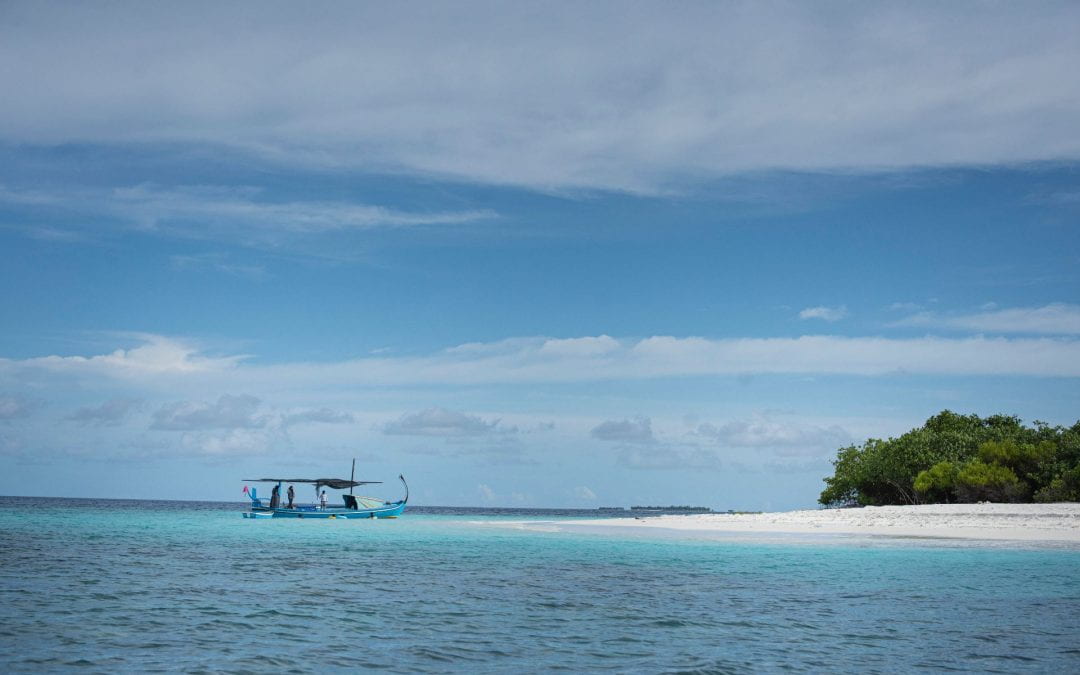By Julia Budler
Julia Budler explores the displacement of people due to climate change.
In its first 1990 assessment, the Intergovernmental Panel on Climate Change (IPCC) noted that “the gravest effects of climate change may be those on human migration,” predicting the displacement of millions due to shoreline erosion, coastal flooding and drought.[1]
Since then, the effects of climate change on mass displacement have become more evident. For nations such as Bangladesh, the effects of salinisation on cultivatable coastal land is estimated to displace more than 200,000 people annually, increasing to a total of 2.1 million if permanent inundation occurs.[2] Of particular vulnerability are smaller island nations and territories, such as Tuvalu, Kiribati, Vanuatu and the Maldives, that are facing the threat of total submersion of their countries[3] According to 2017 United Nations Reports, in the republic of Kiribati alone, 81% of households indicated that they have been affected by sea-level rise in the last 10 years.[4] Currently, migration in Kiribati from the outer islands to the capital of South Tarawa is resulting in overcrowding and exacerbating existing water shortages from sea level rise.
Researchers aren’t predicting these climate induced shifts to end anytime soon. As first presented in ‘Environmental Refugees: An Emergent Security Issue’, the widely accepted prediction is 200 million climate change migrants by 2050. [5]
The severity of the displacement identified by the aforementioned articles directs our attention to a particularly salient point within the current debate over climate refugees. As Norman Myers questions in “Environmental Refugees: A Growing Phenomenon of the 21st Century”, “Why are environmentally displaced persons still viewed as a ‘peripheral concern’ and neglected in policy talks in comparison to ecological effects?”[6] The simple answer is largely that the terms ‘climate refugee’ or ‘environmental refugee’, despite wide use, have no legal basis in international refugee law, under the United Nations 1951 Convention, including amendments.[7]
The United Nations 1951 ‘convention and protocol relating to the status of refugees’ defines a refugee as “someone who is unable or unwilling to return to their country of origin owing to a well-founded fear of being persecuted for reasons of race, religion, nationality, membership of a particular social group, or political opinion.”[8] As it stands, this definition does not classify those fleeing from climate induced threat as refugees.
What is highlighted by the 2017 article “Climate change and forced migrations” is that it is not this lack of precise definition that concerns social scientists but rather an absence of normative protection. The authors suggest that this lack of legal recognition, in spite of ongoing conversation, is concerning in the way it indicates an abdication of responsibility from the international community to resolve issues of climate displacement.[9]
Given this, legal recognition of those displaced by climate induced threat as refugees is the first step towards addressing the broader issue at hand.
References:
[1] Intergovernmental Panel on Climate Change, “Climate Change: The 1990 and 1992 IPCC Assessment”, 103
[2] Hauer et al., “Sea-level rise and Human Migration,” 34.
[3] Campbell, “Climate-Change Migration in the Pacific.”
[4] United Nations, “Pacific Islanders Faced with Climate-Induced Migration.”
[5] Myers, “Environmental Refugees: A Growing Phenomenon of the 21st Century.”
[6] Myers, “Environmental Refugees: A Growing Phenomenon of the 21st Century,” 611.
[7] United Nations. “Convention and protocol relating to the status of refugees.”
[8] United Nations. “Convention and protocol relating to the status of refugees,” 3.
[9] Berchin et al., “Climate change and forced migrations: An effort towards recognizing climate refugees.”
Julia Budler is a Postgraduate Honours student in Politics and International Relations at the University of Auckland.
Disclaimer: The ideas expressed in this article reflect the author’s views and not necessarily the views of The Big Q.
You might also like:
Do climate refugees need special protection? 🔊
Sink or swim: How are low-lying Pacific islands adapting to climate change?

